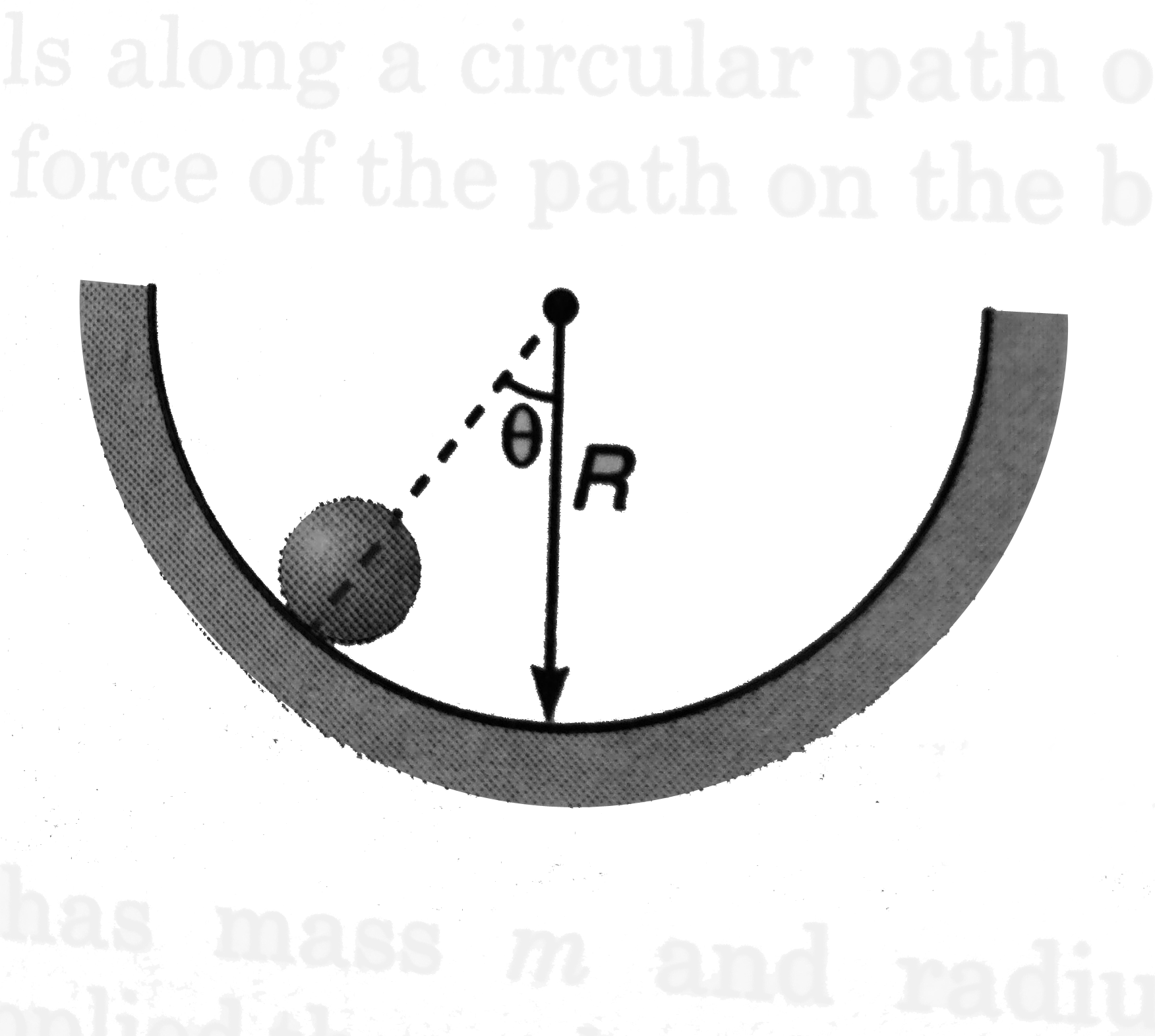
A ball of mass m and radius r rolls along a circular path of radius R its speed at the bottom (θ=0∘) of the path is v0 find the force of the path on the ball as a function of θ.
Video Solution
Text Solution

h=(R−r)(1−cosθ)
K=75(12mv20)−mgh
∵ In case of pure rolling
KT=57K
∴12mv2=12mv20−57mgh
∴v2=v20−107gh ...(ii)
Equation of motion at angle θ is
N−mgcosθ=mv2(R−r)
∴N=mgcosθ=m(R−r)(v20−107gh)
Subsituting value of h from eq. (i)
N=mgcosθ+(mR−r)
{v20−107g(R−r)(1−cosθ)}
=mg7(17cosθ−10)+mv20R−r)
Force of friction,
f=mgsinθ1+mr2I (for pure rolling to take place)
=mgsinθ1+52 (I=25mr2)
=27mgsinθ
|
Updated on:21/07/2023
Topper's Solved these Questions
- BOOK - DC PANDEYCHAPTER - ROTATIONAL MECHANICSEXERCISE - Subjective Questions2videos
ROTATIONAL MECHANICS
- BOOK - DC PANDEYCHAPTER - ROTATIONAL MECHANICSEXERCISE - Level 21videos
ROTATIONAL MECHANICS
- BOOK - DC PANDEYCHAPTER - ROTATIONEXERCISE - (C) Chapter Exercises39videos
ROTATION
- BOOK - DC PANDEYCHAPTER - ROTATIONAL MOTIONEXERCISE - Integer Type Questions17videos
ROTATIONAL MOTION
Similar Questions
Knowledge Check
- Question 1 - Select One
A particle of mass m is moving on a circular path of radius r with uniform speed v , rate of change of linear momentum is
AZeroBIndependent of speedCProportional to radius rDProportional to v2 - Question 2 - Select One
A satellite of mass m goes round the earth along a circular path of radius r. Let mE be the mass of the earth and RE its radius then the linear speed of the satellite depends on.
Am,mE and rBm,RE and rCmE onlyDmE and r - Question 3 - Select One
A particle of mass m is moving in a plane along a circular path of radius r. Its angular momentum about the axis of rotation is L. The centripetal force acting on the particle is.
AL2mrBL2mrCL2mr3DL2mr2
A car of maas M is moving on a horizontal circular path of radius r. At an instant its speed is v and is increasing at a rate a.
View SolutionA particle is moving on a circular path of radius R with constant speed v. During motion of the particle form point A to point B
 View Solution
View SolutionA Particle of mass 'M' moves in a uniform circular path of radius 'r' with a constant speed 'v' then its centripetal acceleration is .
View SolutionA particle of mass 'm' moves with a constant speed along a circular path of radius r under the action of a force F .Its speed is given by
View SolutionA particle of mass M moves with constant speed along a circular path of radius r under the action of a force F. Its speed is
View Solution

